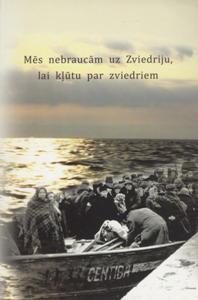|
We didn’t go to Sweden to become Swedes 
Of the world’s six billion people of various colours and nationalities, who speak more than 8000 languages, approximately 1.5 million are Latvians who speak Latvian and live for the most part in Latvia. However, about 200 000 Latvians live elsewhere – Russia, the United States, Brazil, Australia, England, Ireland, Germany, Venezuela, Canada, Norway, Sweden, and even South Africa. The book consists of two parts, each representing a different point of view. The academic articles in the first part of the book serve as a viewing tower from which to observe the general outlines of the exile communities in time and space, focusing mainly on identity and community. The life stories in the second part of the book let the reader glimpse historical events from the viewpoints of the actual participants. Stories and story-telling are a significant social and cultural phenomenon in the exile communities, where they shape points of view regarding recent history and group identity. Through their articles, the researchers present a map of the Latvian exile community in Sweden, but the life stories reveal individual experiences and the various paths specific lives have taken. Oral history is a bridge between the past and the present, between academic research and everyday life. The life stories in the second part of the book provide an insight into the personalities and the drastic changes they experienced in their lives, having been forced by circumstances to leave their homelands. The selected life stories reflect various age groups. Vera Puķīte, Valentīne Lasmane, and Sergejs Ozoliņš left Latvia as young adults who were already living on their own, working in their professions, and in some cases already raising a family. Vilis Klucis, who had been drafted into the army as soon as he graduated from school, escaped from Latvia right before capitulation, as did Gunars Zvejnieks, mobilized into an air force support unit. The young sailor Pēteris Jansons, having just celebrated his 21st birthday, took it upon himself to ferry refugees by boat across the sea to Sweden. Ilga and Jānis Čakste were young people and Izabella Cielēna and Aina Zvejniece were still teenagers at the time of escape. With the publication of this book we hope to break some stereotypes as well as lessen the gap between Latvians in Latvia and Latvians abroad. We wish for the reader to experience first-hand the saga of exile – how Latvians survived and overcame the horrors of war, the uncertainty, and the difficulties to eventually establish themselves and put down roots in a foreign land, at the same time retaining their Latvian identity. Baiba Bela
Translated by Amanda M. Jātniece |